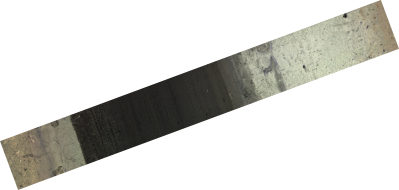On Micro- and Macroscopic houses
BackFor the past decade I’ve been looking at the shells of unicellular organisms called foraminifera through the microscope. Now, I can’t look at human architecture anymore without seeing huge shells. On micro and macroscopic houses traces the roots of human architectural approaches within the building mechanisms of unicellular marine organisms.
Shells and Shelters
Biominerals seem to be at the intersection of living and dead matter; an attempt of life to create order and preservation amid the chaos and random motions of elements in fluids and gasses.
Biominerals are shaped into solid objects within and around the body, often remaining preserved after death. As these objects, such as shells, wisdom teeth, bones, kidney stones and external skeletons, can be disconnected from the body, you can question where the body ends and the skeleton begins. Can human buildings also be seen as biominerals, as externalised parts of the body, forming our future fossils?
<-- Cross-section of a foraminiferal shell and the floor plan of my appartement.
Divide and Hide
The evolution of the house as an answer to the evolution of the eye: somewhere to hide
Around 500 million years ago, after unicellular lifeforms peacefully lived together in colonies since the origin of life 3.5 billion years ago, peace came to an end: carnivory was invented. The atmosphere became more oxygenated through the evolution of photosynthesis, and as oxygen is a great combustor, this accelerated an evolutionary arms race known as 'the Cambrian explosion of life'.
As more diverse and complex lifeforms evolved, creatures started to eat each other. To do so, hunting aids evolved, such as eyes for vision, and teeth to attack and consume prey. In response, protection techniques evolved: becoming invisible by adjusting your colour and protecting your vulnerable flesh by creating a shell or external skeleton.
Dwellings
The peaceful colony became a gated community, and the house was born as an answer to the eye: a place to hide, a divide between inside and outside.
What you could consider as the 'evolutionary' origin of architecture is perhaps still preserved in the etymology of the word house. The Old English hus, meaning ‘dwelling, shelter, building’, comes from the Proto-Germanic hūsan, of unknown origin, is likely connected to the root of the word ‘hide’.
Image of the corridors within a foraminiferal shell, by Inge van Dijk.
Buildings with chambers, delineated by walls, buildings with ornaments around the door, buildings that are first shaped with scaffolds and then cemented, all of these features are present in both the (making of) foraminiferal shells and human architecture. This made me question how far this analogy can be stretched: in what sense do our buildings still resemble scaled up versions of the shells unicellular creatures started to build 500 million years ago? Did the meaning and function of architecture fundamentally change over these 500 million years, or actually not that much?
Flying and Floating
Architecture for lost dreams. On the left, you see a 'benthic' foraminiferal specimen, that lives on the seafloor. It has a floatation chamber that it can fill with gas, so it can 'fly' above the seafloor by adjusting it's buoyancy. On the right, my former office building, De Ruimte in Amsterdam. The top floor, shaped in the form of a control room, was added to the building in a later stage, as the owner had wanted to become a pilot, but failed.
Dissolve and Grow
Many shapes grow by dissolving other shapes.
In this image you see my mother's house, the house were I was born. You also see foraminifera reproducing asexually, by splitting their cell into a multitude of new cells, that are immediately starting to form a new shell. And when they build their shells, they acidify the surrounding seawater, which dissolves elements from the mothershell, that may then be used to build their own shell. With current Amsterdam housing prices, I would need to dissolve a part of my mothers house, to be able to buy a house, and if I will not buy a house, my children may not be able to buy a house.
How can we pass on houses, by dissolving and transforming them, over generations?
Next recommended article:
